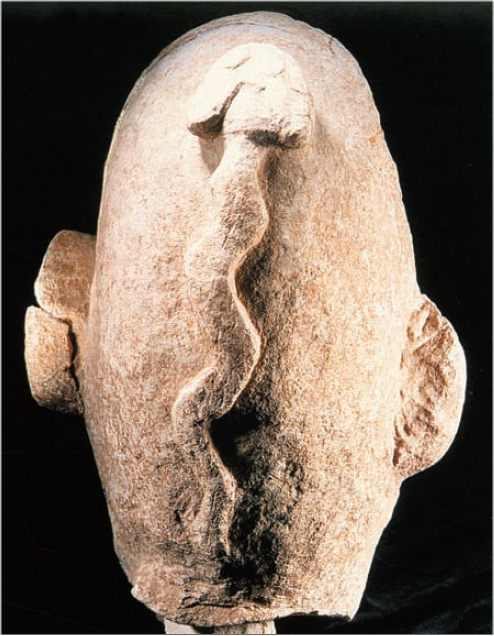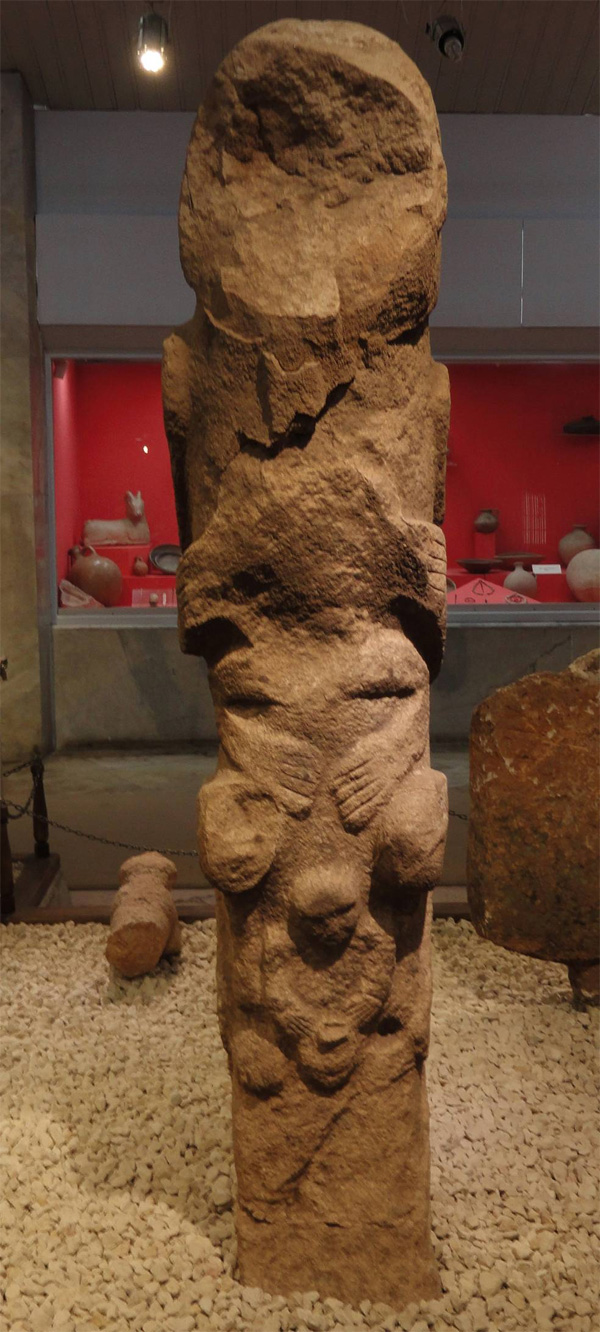Do you think it would ruffle too many feathers if we were try to get our organization to invite Heiser to speak at the next Biologos meeting in 2019?
Sounds fun.
The original point I was making is that there was some kind of transition from Ugarit mythology to Council of the Gods conception suggested for an early phase of of Hebrew religion - - or shall we say the last phase of a discontinued view?
I personally very much agree that the a Council of the Gods can be seen in the Old Testament. So i don’t want you to interpret our minor disagreements on angels to have any bearing on the Council.
I think the Council of the Gods got put on hold, and then “nuked” when the Jewish priests were negotiating their return to Jerusalem. The Persian Emperor no doubt was willing to offer substantial cash and other supports to make sure that Jerusalem was repopulated with a strong economy and garrison… but only if the Temple was going to focus on a few specifics.
Angels instead of a council of Gods (competing with the Persian Emperor for control of the world) would have been an excellent compromise!
I agree, but vestiges of the ANE divine council did still exist in the Second Temple Era. There is I think a reason why the Watchers of Enoch chose Mount Hermon to descend. Because Mount Hermon was the seat of the Divine Council in earlier texts such as the Epic of Gilgamesh. In essence, it they lived at the top, so descended at the bottom.
I will also agree that Angels Second Temple and NT theology have much more in common with Amesha Spentas than with OT angels, who were really little more than messengers. Whenever the word mlkm appears in the OT, whether with human or divine figures, it is almost always in the context of messengers.
However, if (and do correct me if I’m wrong here) you are arguing for direct influence from Zoroastrian theology, I will have to disagree with you here. I think it is more likely that they simply stopped referring to them as Gods, otherwise they are pretty much the same. It may have been due to external ‘pressure’ from Persia, but I see no reason to suspect syncretism. In fact, it is hard to reconstruct Achaemenid theology, since the Zoroastrian scriptures did not exist in written form until the Sassanid era.
@Reggie_O_Donoghue, you say syncretism… I say influence.
Ugaritic mythology is full blown polytheism.
In the Bible, you have a much toned down polytheism … interspersed with emphatic insistence that any idol is a fake.
Egyptians believed in Priestly purification, and presumably most of the other ancient cultures had versions of this as well. But the Zoroastrians were extreme in all their habits - - bathroom, cooking, death. And we find a close analogy to their practices in how the Essenes worshipped the rising sun, and made sure not to offend the Sun’s disk by letting sunlight shine on their toilet holes.
What we call Purim seems to be analagous to the festival of Nowruz. The Christian fixation that souls will eventually spend eternity in the sky has no real counterpart with any ANE mythology (not even Egypt’s)… except Zoroastrianism.
The Biblical fixation that there is only one God of the Universe, plus a demon, and a a few dozen (or dozen dozen) divine entities we call angels has only one real comparison: Zoroastrianism.
So… by all means… let’s not call it syncretism. I’ll just continue to call it “religious influence”.
I’d call it monolatry.
And it is not a consistent monolatry.
“The Babylonian exile seems to have been a turning point after which the Jewish people as a whole were strongly monotheistic and willing to fight battles (such as the Maccabean Revolt) and face martyrdom before paying homage to any other god.”[7]
[Footnote 7]
Idol: In the Exile and After, in HarperCollins Bible Dictionary, 1996, Achtemeier Paul J., ed., New York: HarperCollins Publishers, ISBN 0-06-060037-3; Sermon LXXXIII: On Spiritual Idolatry, in Wesley, John, Sermons on Several Occasions, Vol. 2, Jackson, T., ed., London: J. Kershaw, 1825, pp. 314-315
That doesn’t deny their existence, it just shows they were not willing to worship the Gods. As late as the New Testament Era, Paul claimed sacrifices to pagan idols were given unto demons, which acknowledges that whatever else they were, these ‘gods’ were very real entities.
“Demons” are a category of minions of Satan. Paul was not acknowledging any God on par with Yahweh.
While the Ten Commandments might have implied the existence of other Gods, Paul does not.
I now think the Nephilim did not have to be demigods. Cainite’s (or Lamechites) are described in terms similar to the Apkallu:
19 Lamech married two women, one named Adah and the other Zillah. 20 Adah gave birth to Jabal; he was the father of those who live in tents and raise livestock. 21 His brother’s name was Jubal; he was the father of all who play stringed instruments and pipes. 22 Zillah also had a son, Tubal-Cain, who forged all kinds of tools out of[g] bronze and iron. Tubal-Cain’s sister was Naamah.
Hosea 1:10 also calls humans , ‘sons of the living God’.
George. I know your disdain for angels but this remarkable piece sure looks like an angel to me from Nevali Çori a region that is associated with the garden of Eden nearly 6-8,000 years earlier than the Zoroastrian or Ugarit societies. I don’t doubt that the Hebrew scholars probably derived their Genesis from the Zoroastrian and Ugarit in part. But I think that theses cultures derived this from an earlier time and culture.
An “angel” with elongated head.
And then there is this amazing totem pole from maybe earlier from the same region Göbekli Tepe which I think denotes lineage of a people.
And then of course the snake . Which I think in this case may represent advanced knowledge or consciousness.

I’m not sure why you think that particular statue is an angel. And since an angel is a definitional classification of a divine being … how would you distinguish between a god and an angel?
I get the strong sense that you are “gas-lighting” me …
How do you know that it’s not a sloth?.. Or, better yet an angelic sloth?

Yes I am starting the think that Nephilim is a more generic term referring to just big people or if you like giants compared to the people native to the region. I think that this may have been a different ethnic group or even groups that were distinguished from the line of Adam. So though the watchers or Sons of Gods bred Nephilim from the daughters of man doesn’t mean that all nephilim were from the Watchers or sons of God.
I guess not all tall people are bad just they not from the line of Adam 
I also think Heiser is wrong in asserting that ‘Nephilim’ means ‘giant’, as opposed to fallen ones.
Here’s an article:
And here’s more evidence:
When human beings began to increase in number on the earth and daughters were born to them, 2 the sons of God saw that the daughters of humans were beautiful, and they married any of them they chose. 3 Then the Lord said, “My Spirit will not contend with[a] humans forever, for they are mortal[b]; their days will be a hundred and twenty years.”
4 The Nephilim were on the earth in those days—and also afterward—when the sons of God went to the daughters of humans and had children by them. They were the heroes of old, men of renown.
26 “Meshek and Tubal are there, with all their hordes around their graves. All of them are uncircumcised, killed by the sword because they spread their terror in the land of the living. 27 But they do not lie with the fallen warriors (Gibborim Nophelim) of old, who went down to the realm of the dead with their weapons of war—their swords placed under their heads and their shields[c] resting on their bones—though these warriors also had terrorized the land of the living.
The realm of the dead below is all astir to meet you at your coming; it rouses the spirits of the departed (Repha’im) to greet you-- all those who were leaders in the world; it makes them rise from their thrones-- all those who were kings over the nations.
If you’ve been paying attention then two of the words used for giants (Gibborim and Repha’im) are used to refer to heroes of old (like the Nephilim) who end up in the underworld. The former term is used alongside a word which means ‘fallen’.
Heiser also has an interpretation of Genesis that might be of interest to the Biologos crowd. How do you think we try to initiate Heiser coming to speak at the next Biologos Conference?
I will stick with Heiser on the Nephilim as Giants.
Consider the Nephilim are described as giants in Book and the Book of Enoch. Gilgamesh was considered to be a large like a giant. Sumerians depicted their Gods as large like giants.
Enki is tall
Gilgamesh with a kitty is a big dude. And Part divine, a Nephilim.
It’s possible that they were (Numbers 13 makes it explicit), all I’m arguing is that the word ‘nephilim’ does not ‘mean’ giant.
It’s interesting that a ‘giant’ by the standard of the Ancients needn’t be a giant by our standards. 6ft would be inhumanly tall by their standards. I therefore suggest that the ‘giants’ of Canaan may have been merely a group of individuals with a genetic mutation.
I think the Sons of God were probably Lamechites, who were percieved of as quasi-divine because of the fact that according to Genesis they pioneered technologies. They very well could be the inspiration behind the Apkallu. In this sense I am acknowledging that Bene HaElohim DOES means a divine entity, but that this is only how they were ‘perceived’. They introduced metalwork to the daughters of men, which eventually led to mass violence in the near east region, which caused God to send a flood.


